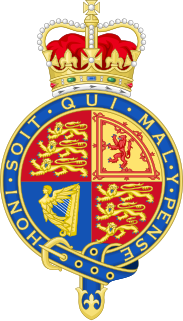Related Research Articles

Cestui que is a shortened version of cestui a que use le feoffment fuit fait, literally, the person for whose use/benefit the feoffment was made, in modern terms a beneficiary. It is a Law French phrase of medieval English invention, which appears in the legal phrases cestui que trust, cestui que use, or cestui que vie. In contemporary English the phrase is also commonly pronounced "setty-kay" or "sesty-kay". According to Roebuck, Cestui que use is pronounced. Cestui que use and cestui que trust are often interchangeable. In some medieval documents it is seen as cestui a que. In formal legal discourse it is often used to refer to the relative novelty of a trust itself, before that English term became acceptable.

A discretionary trust, in the trust law of England, Australia, Canada and other common law jurisdictions, is a trust where the beneficiaries and/or their entitlements to the trust fund are not fixed, but are determined by the criteria set out in the trust instrument by the settlor. It is sometimes referred to as a family trust in Australia or New Zealand. Where the discretionary trust is a testamentary trust, it is common for the settlor to leave a letter of wishes for the trustees to guide them as to the settlor's wishes in the exercise of their discretion. Letters of wishes are not legally binding documents.
In trust law, a beneficiary or cestui que use, a.k.a. cestui que trust, is the person or persons who are entitled to the benefit of any trust arrangement. A beneficiary will normally be a natural person, but it is perfectly possible to have a company as the beneficiary of a trust, and this often happens in sophisticated commercial transaction structures. With the exception of charitable trusts, and some specific anomalous non-charitable purpose trusts, all trusts are required to have ascertainable beneficiaries.

Guy Anthony "Tony" Vandervell was an English industrialist, motor racing financier, and founder of the Vanwall Formula One racing team.

English trust law concerns the protection of assets, usually when they are held by one party for another's benefit. Trusts were a creation of the English law of property and obligations, and share a subsequent history with countries across the Commonwealth and the United States. Trusts developed when claimants in property disputes were dissatisfied with the common law courts and petitioned the King for a just and equitable result. On the King's behalf, the Lord Chancellor developed a parallel justice system in the Court of Chancery, commonly referred as equity. Historically, trusts have mostly been used where people have left money in a will, or created family settlements, charities, or some types of business venture. After the Judicature Act 1873, England's courts of equity and common law were merged, and equitable principles took precedence. Today, trusts play an important role in financial investment, especially in unit trusts and in pension trusts. Although people are generally free to set the terms of trusts in any way they like, there is growing legislation to protect beneficiaries or regulate the trust relationship, including the Trustee Act 1925, Trustee Investments Act 1961, Recognition of Trusts Act 1987, Financial Services and Markets Act 2000, Trustee Act 2000, Pensions Act 1995, Pensions Act 2004 and Charities Act 2011.

The three certainties refer to a rule within English trusts law on the creation of express trusts that, to be valid, the trust instrument must show certainty of intention, subject matter and object. "Certainty of intention" means that it must be clear that the donor or testator wishes to create a trust; this is not dependent on any particular language used, and a trust can be created without the word "trust" being used, or even the donor knowing he is creating a trust. Since the 1950s, the courts have been more willing to conclude that there was intention to create a trust, rather than hold that the trust is void. "Certainty of subject matter" means that it must be clear what property is part of the trust. Historically the property must have been segregated from non-trust property; more recently, the courts have drawn a line between tangible and intangible assets, holding that with intangible assets there is not always a need for segregation. "Certainty of objects" means that it must be clear who the beneficiaries, or objects, are. The test for determining this differs depending on the type of trust; it can be that all beneficiaries must be individually identified, or that the trustees must be able to say with certainty, if a claimant comes before them, whether he is or is not a beneficiary.

Keech v Sandford[1726] EWHC J76 is a foundational case, deriving from English trusts law, on the fiduciary duty of loyalty. It concerns the law of trusts and has affected much of the thinking on directors' duties in company law. It holds that a trustee owes a strict duty of loyalty so that there can never be a possibility of any conflict of interest.

Boardman v Phipps [1966] UKHL 2 is a landmark English trusts law case concerning the duty of loyalty and the duty to avoid conflicts of interest.

Pender v Lushington (1877) 6 Ch D 70 is a leading case in UK company law, which confirms that a company member's right to vote may not be interfered with, because it is a right of property. Furthermore, any interference leads to a personal right of a member to sue in his own name to enforce his right. As Lord Jessel MR put it, a member:
has a right to say, "Whether I vote in the majority or minority, you shall record my vote, as that is a right of property belonging to my interest in this company, and if you refuse to record my vote I will institute legal proceedings against you to compel you."

Guinness plc v Saunders [1989] UKHL 2 is a UK company law case, regarding the power of the company to pay directors. It required that whatever rules exist for payment in the company's articles, they must be strictly observed.

Vandervell v Inland Revenue Commissioners [1967] 2 AC 291 is a leading English trusts law case, concerning resulting trusts. It demonstrates that the mere intention to not have a resulting trust does not make it so.

Re Vandervell Trustees Ltd [1974] EWCA Civ 7 is a leading English trusts law case, concerning resulting trusts.

Schmidt v Rosewood Trust Ltd[2003] UKPC 26 is a judicial decision concerning the information rights of a beneficiary under a discretionary trust. Although the judgment involved a question as to the law of the Isle of Man, the Privy Council's judgment in Schmidt v Rosewood was adopted into English law by Briggs J in Breakspear v Ackland[2008] EWHC 220 (Ch).

Butt v Kelson [1952] Ch 197 is a UK company law and English trusts law case concerning the right of a beneficiary to direct its trustees to exercise votes on company shares that the trust possesses.
The creation of express trusts in English law must involve four elements for the trust to be valid: capacity, certainty, constitution and formality. Capacity refers to the settlor's ability to create a trust in the first place; generally speaking, anyone capable of holding property can create a trust. There are exceptions for statutory bodies and corporations, and minors who usually cannot hold property can, in some circumstances, create trusts. Certainty refers to the three certainties required for a trust to be valid. The trust instrument must show certainty of intention to create a trust, certainty of what the subject matter of the trust is, and certainty of who the beneficiaries are. Where there is uncertainty for whatever reason, the trust will fail, although the courts have developed ways around this. Constitution means that for the trust to be valid, the property must have been transferred from the settlor to the trustees.

Wallersteiner v Moir [1975] QB 373 is a UK company law case, concerning the rules to bring a derivative claim. The updated law, which replaced the exceptions and the rule in Foss v Harbottle, is now contained in the Companies Act 2006 sections 260-264, but the case remains an example of the likely result in the old and new law alike.
Borland’s Trustee v Steel Brothers & Co Ltd [1901] 1 Ch 279 is a UK company law case, concerning the enforceability of a company's constitution and the nature of a company share. It is also one of the rare exceptions to the rule that a transfer of assets which only takes effect upon a person's bankruptcy is normally void.

Re Denley’s Trust Deed [1969] 1 Ch 373 is an English trusts law case, concerning the policy of the "beneficiary principle". It held that so long as the people benefitting from a trust can at least be said to have a direct and tangible interest, so as to have the locus standi to enforce a trust, it would be valid.

The history of equity and trusts concerns the development of the body of rules known as equity, English trust law and its spread into a modern body of trust law around Commonwealth and the United States.
McDonald v Horn [1995] 1 All ER 961 is an English trusts law case on pensions, relevant for UK labour law. It enables the beneficiaries of a pension fund to be indemnified for costs in bringing actions for breach of trust, fiduciary duty or the duty of care against the trustees or directors of a pension fund.
References
- RC Nolan, 'Indirect Investors: A Greater Say in the Company?' [2003] JCLS 73
- RC Nolan, ‘Vandervell v IRC: A Case of Overreaching’ [2002] CLJ 169, argued that a trustee should not have to take instructions from a beneficiary with a limited interest in shares, because that would be contrary to the principle that a registered owner should vote in the interests of all beneficiaries.